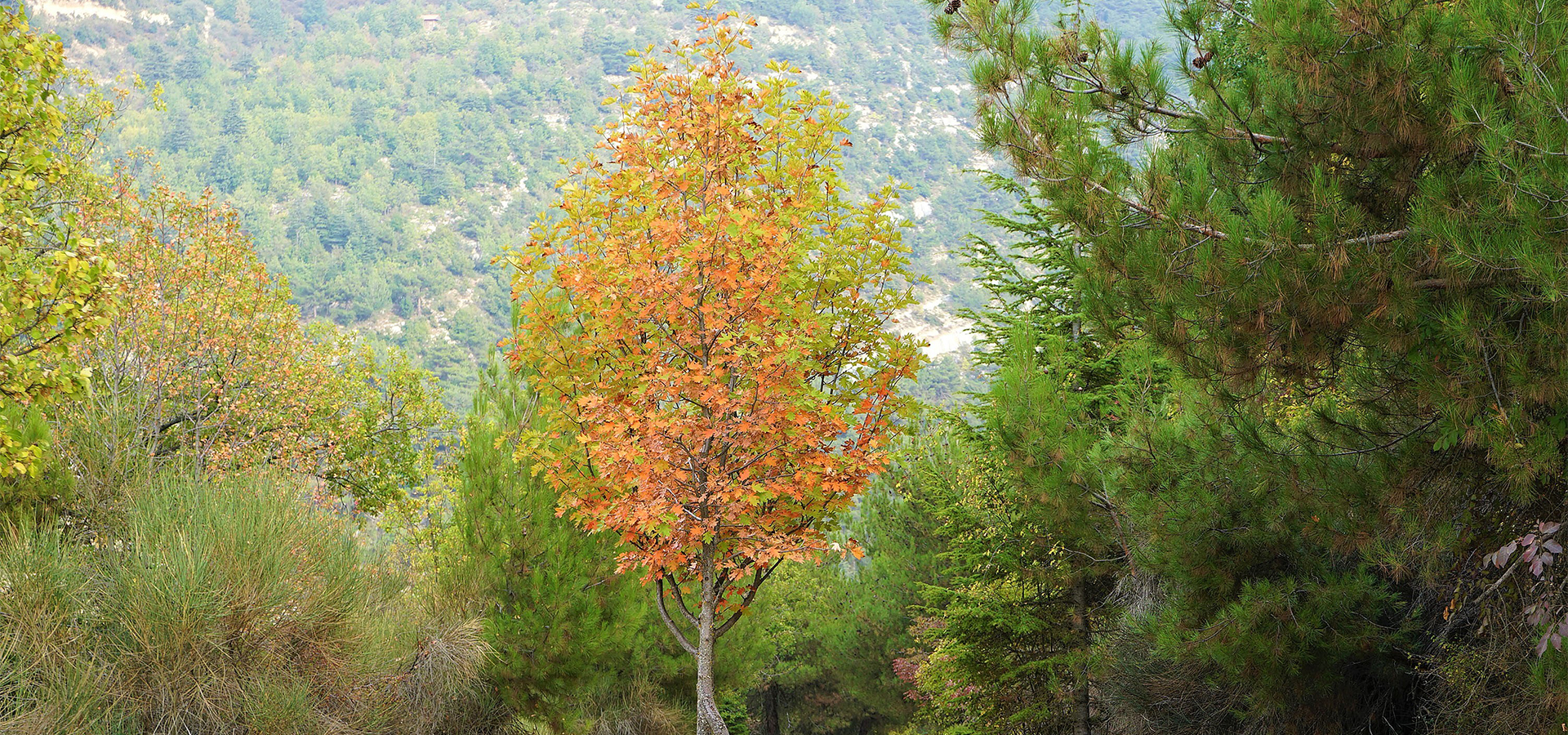
The Checker Tree: Queen of Autumn
- January 25, 2021
- 0
Sorbus Torminalis
- Sorbus torminalis (L.) Crantz is the scientific name of the wild serviceberry or checker tree, locally known as “Ghbayra” or “Teffah el Hmar”.
This tree is from the rosaceous family, meaning it is a relative to apple, plum and roses.
The checker tree is found all over Europe except Ireland, Scandinavian and Baltic countries, as well as in the Mediterranean countries except Tunisia, Libya Egypt, Palestine, Malta and Cyprus. In addition, we can find it in Armenia, Azerbaijan, Georgia and Iran.
By observing its distribution, we understand that it is a tree requiring cold temperatures in winter, along with generous rainfall. At the same time, and like all trees from the rosaceous family, it is a sun-loving plant that cannot tolerate too much shade.

This explains its distribution in Lebanon, which is mainly concentrated on the western slopes of Mount Lebanon, between 1200 and 1900m of altitude. The tree can be spotted or observed form Akkar el Atiqa to Massser el Chouf. It is very common in major protected areas like Ehden, Tannourine, JAJ, Jabal Moussa and the Shouf Biosphere Reserve. It is rarely observed on the eastern slopes of Mount Lebanon: Maasser el Chouf road to Kefraya, and Mrah el Mahlissi. On the various mountain trails, it is very distinguishable in Mechmech-Akkar, Jabal Foghri, or Ehmej, and between Hyata and Wata el Joz.
The checker tree is highly ornamental due to its beautiful autumn leaf colours, which exhibit all the variants from yellow, orange and red. In addition, it has clusters of white flowers in mid spring that are very attractive to bees. The tree has a slender form, with a straight single stem in general, which would make of it a potential tree for plantations in home gardens, along roads of mountain villages, and for reforestation activities.

In addition to its ornamental interest, the tree bears edible fruits, consumed raw or cooked. The fruits are also attractive to birds.
The tree has a high potential for quality wood production and as a melliferous tree (providing nectar and pollen for bees).
Seedlings are available at nurseries producing native forest trees.
The checker tree can accommodate with regular watering during the first few years after plantation. Once the tree has its root system well established and deep enough, it can survive without irrigation. Make sure to plant the tree in a place with at least 50cm of soil depth. The autumn colours will do best in areas subject to cool autumns, with frequent fog.
Prepared by:
Jean Stephan, PhD
Biodiversity Conservation and Management of Natural Resources
Lebanese University
Faculty of Science -Fanar











